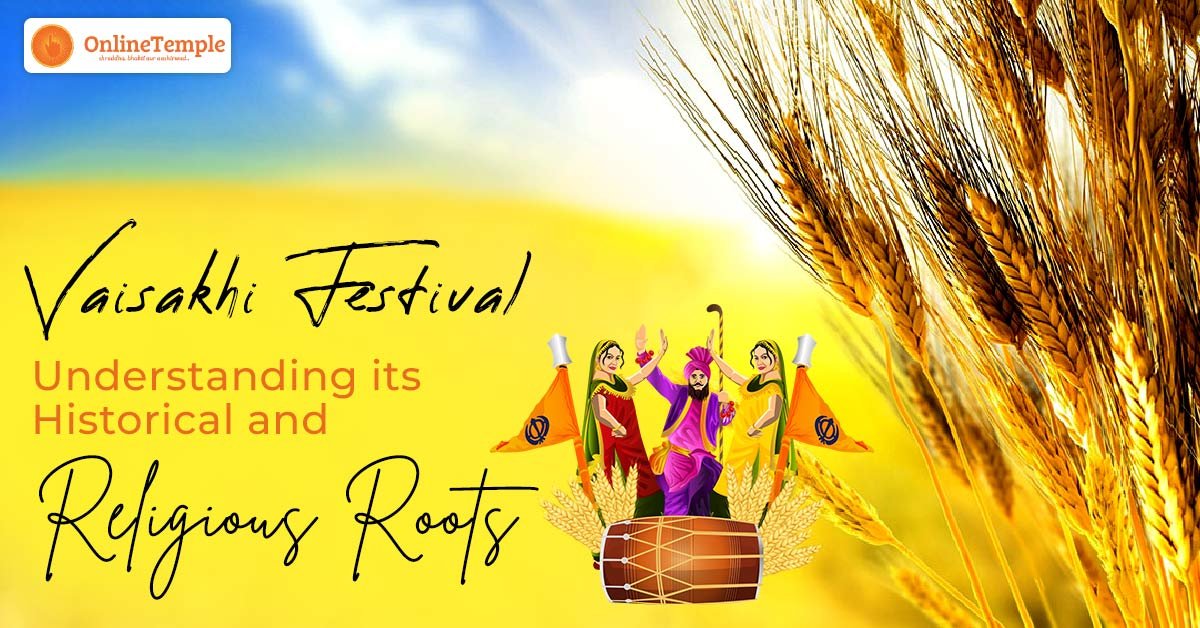Many people heard of Vaisakhi or Baisakhi but do not know the exact history of its religious roots. In India, predominantly Punjab and other parts of northern states celebrate, this lively festival with great joy excitement, and hope. This festival marks the beginning of the Punjabi New Year. This day also identifies with the founding of Sikhism. You can go to our website Onlinetemple.com and book an Online Puja for Career and follow all the Hindu traditions and customs.
Every year, in April, vaisakhi day falls on the 13th or 14th. This is all according to the Hindu calendar. People celebrate this day with different activities– dancing, singing, delicious food, colorful decorations, and more. These activities are to honor their 10th guru “Guru Gobind Singh”. It has its unique way of celebrating. These festivals showcase how diverse and rich Indian culture is.
The background of the Baisakhi Festival and its purpose:
The Mughal emperor Aurangzeb assassinated Guru Gobind Singh’s father “Guru Teg Bahadur”. As a result, Gobind Singh became the Sikhs’ next, or tenth, Guru. When he saw the appalling conditions of those around him, Guru Gobind Singh decided to organize an event. It encourages bravery and inspires people to give their lives for the country.
It so happened that in 1699, everyone gathered to celebrate the Vaisakhi holiday. After seeing them, Guru Gobind Singh emerged from his tent, brandishing a sword, and asked who among the people was willing to give their life for their Motherland. Initially, a young guy stepped up to accompany Guru Gobind Singh to the tent. After some time, Guru Gobind Singh emerged from the tent wielding a bloody sword, which piqued the people’s interest and concern.
Four more men entered the tent, but the result was the same. Everyone assumed that all five guys had died, but unexpectedly they emerged alive and sporting turbans. And these five guys were collectively known as Panj Piare, or the ‘Beloved Five’. And it was then that Guru Gobind Singh showered Amrit (sugar water) on these five men, recited prayers, and baptized them into the Khalsa, making them the first five members of the Khalsa. As a result, it was hailed as the start of a new religion known as the “Khalsa Panth,” and the five men were instructed not to fear anyone other than God.
How is the Vaisakhi celebration celebrated?
In today’s digital age, you have the option to access affordable online puja services, combining convenience with traditional practices. Vaishaki festival celebrations begin with immense enthusiasm, excitement, and devotion, with Gurudwaras being cleaned and decorated before meeting for morning prayers. Once the prayer is completed, the prasad, which is essentially the sweet known as ‘Kada Prasad’, is delivered to the devotees. Langar, a strictly vegetarian meal, is served to followers, regardless of their status, in the afternoon or at lunchtime.
Once completed, the celebration shifts to a parade with the Guru Granth Sahib, which is accompanied by religious songs, hymns, and chants. This procession, known as the “Nagar Kirtan” in Punjabi, is mostly led by five men, known as the Panj Pyare, who are dressed in magnificent Kesari or Saffron-colored garments and ends at a certain Gurudwara where prayers will be delivered.
In the evening, all Sikh families gather to perform dance performances like Bhangra and Gidda, and the celebrations conclude with lip-smacking delicacies such as Sarson Ka Saag, Makki di Roti, Aloo Puri, sweets, and other delicious meals. You should explore the Book Online Pujas Services to gain a new perspective on Hindu tradition and custom.
Also Read: Lord Ganesh: The Magnificent Deity with an Elephant Head

